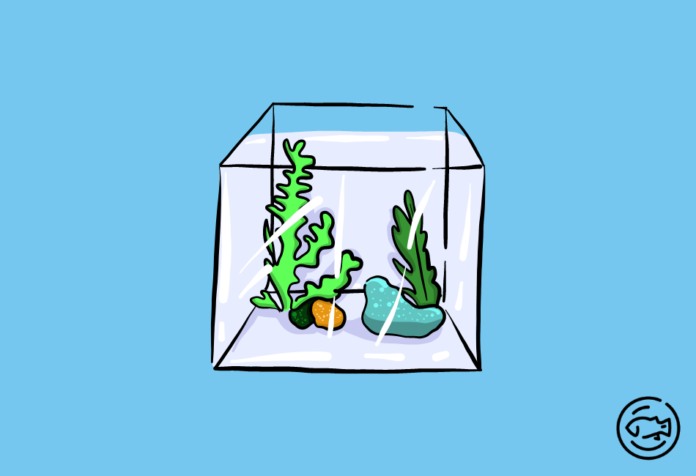Incorporating Aquarium Plants That Float can entirely transform the ambiance of your aquarium. In fact, they are our top recommendation for aquarists aiming to enhance the overall aesthetics of their underwater setting.
Their appeal becomes evident upon seeing them in action. The finest floating aquarium plants confer a distinctively raw and organic touch to your tank. The interplay of light and the hues they create entirely alters your perception.
Your transition from viewing fish in an enclosure to an onlooker of a natural ecosystem as it genuinely feels like you have submerged yourself somewhere exotic around the globe!
This guide walks you through everything necessary to understand the ideal floating plant for your aquarium. This compilation will offer all the alternatives required to elevate your aquarium to unprecedented heights!
Advantages Of Having Floating Plants
Beyond the visual charm these plants contribute, there are additional benefits to incorporating aquarium plants that float into your fish tank. It’s beneficial to highlight these perks before delving into our guide to aid you in selecting the most suitable plant for your needs.
Shelter
These aquarium plants that float skim the water’s surface, influencing the degree of lighting that permeates the aquatic environment. If your fish species prefer more dimly-lit waters, a floating plant can create an atmosphere akin to their natural habitat. This caters to their physical comfort and minimizes their stress levels.
It’s crucial to consider the lighting needs of your tank inhabitants to ensure their well-being. Some prefer more shadowy settings, while others may thrive in brightly-lit waters.
Factor this in when determining the amount of surface area you want your floating plants to cover.
The Power of Plants
Just like their terrestrial counterparts, floating aquarium plants offer an array of benefits to the aquatic ecosystem. These advantages simplify your duties as an aquarist and also create a more pleasant environment for your fish.
Plants serve as natural cleaners, reducing the amount of waste found in the water. Controlling nitrate levels is often challenging for many aquarium keepers, but plants make this task considerably more manageable.
Additionally, they oxygenate the water in ways that are hard for us to replicate. They excel in their role, so it’s wise to capitalize on their abilities.
You have to remember that when discussing floating plants, we emphasize that you should maintain a filter. Relying solely on a plant to filter and purify your water, particularly if it has a significant biological load, isn’t advisable.
Oxygen Generation and Food Source
Aquarium plants that float hold a particular appeal in more compact aquariums such as those for betta fish, shrimp, and other petite arrangements. This is due to their considerable contribution to maintaining stable and secure conditions within the freshwater habitat.
One of the key advantages these water plants offer is oxygen! Utilizing carbon dioxide and releasing oxygen, these plants cater to your fish’s respiration needs.
Given the rapid growth of most floating species, they can generate a copious amount of oxygen.
Low Maintenance
A significant number of the aquarium plants that float which are featured in our compilation are notably undemanding & straightforward to manage. This is an advantage because you need not be a horticultural genius to ensure their growth and survival!
Indeed, many of them are robust and characteristically rapid growers. It would be challenging to cause them to perish, even if that were your intent.
We particularly appreciate this advantage because it allows you to focus on aquaculture rather than the upkeep of plants. This is a primary reason why we consistently opt for floating aquatic plants in our aquariums.
Aquarium Plants That Float
We’ve compiled this impressive catalog of the most sought-after and efficient aquarium plants that float that can be cultivated in your fish tank, simplifying your selection process significantly.
This list features surface dwellers such as red root floater, capable of carpeting your aquarium’s surface, along with rooted varieties like Java Moss.
| Image | Product | Skill Level | Price |
|---|---|---|---|
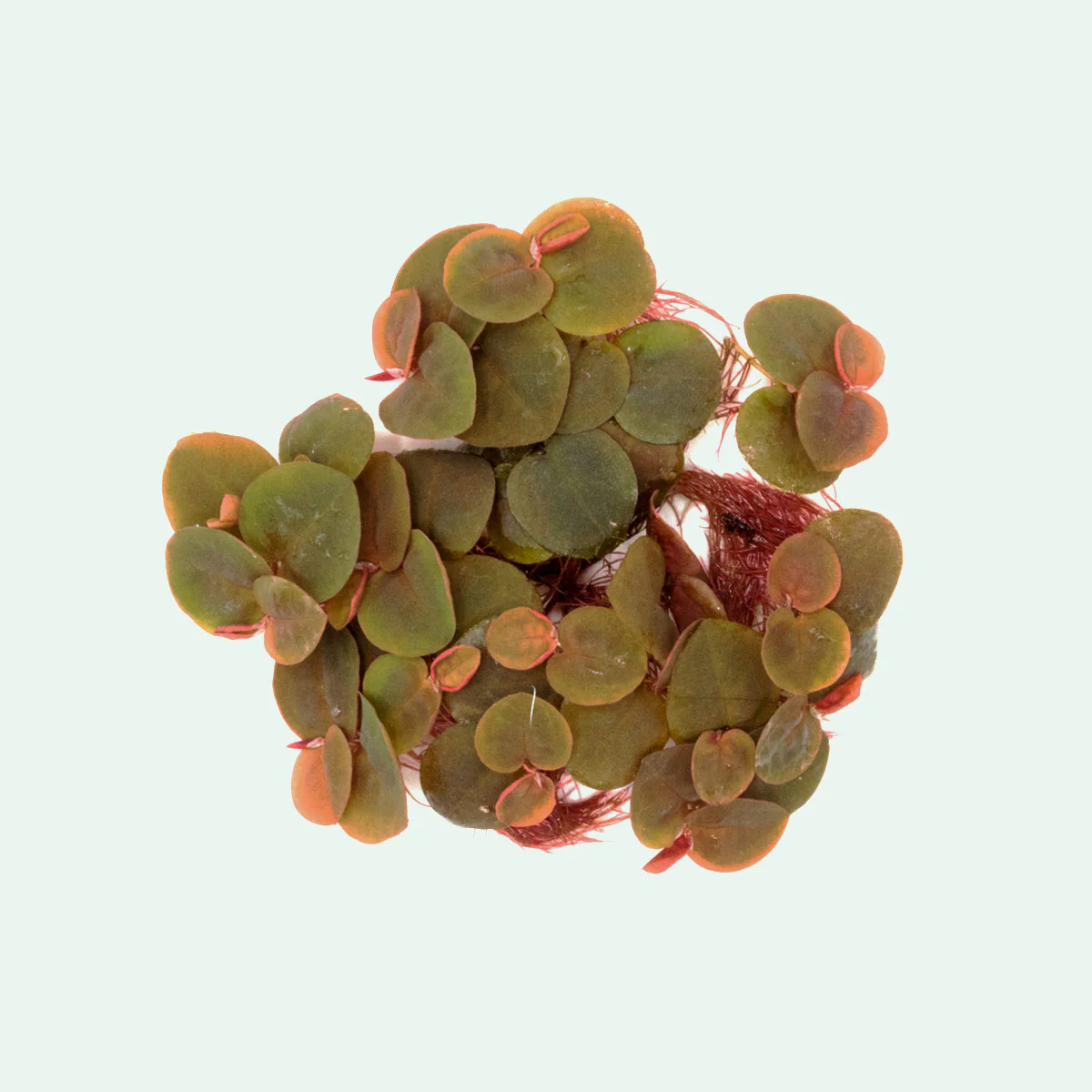 | Red Root Floater |
| Price |
 | Java Moss |
| Price |
 | Mosaic Plant |
| Price |
 | Anacharis |
| Price |
 | Salvinia Natans |
| Price |
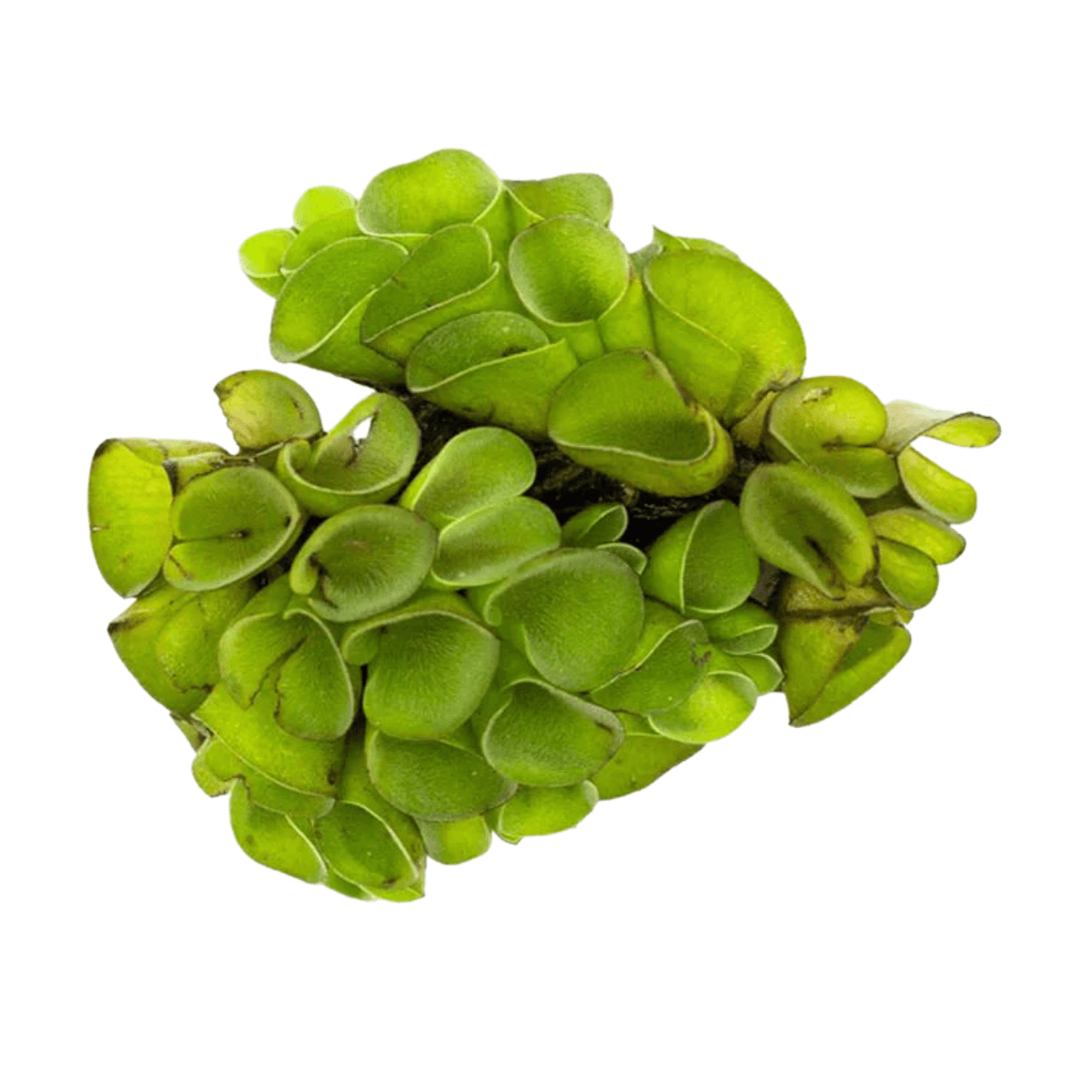 | Salvinia Cucullata |
| Price |
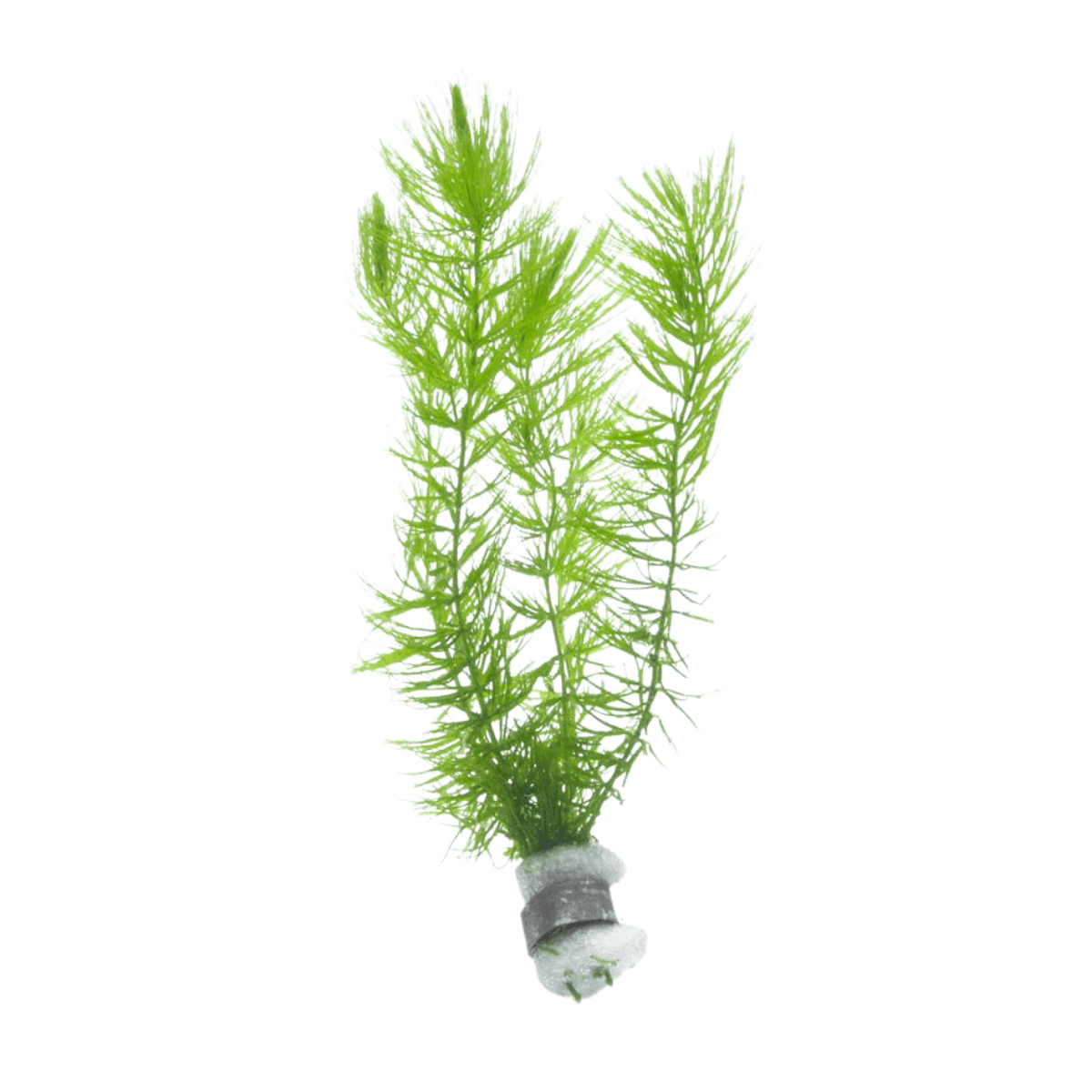 | Hornwort |
| Price |
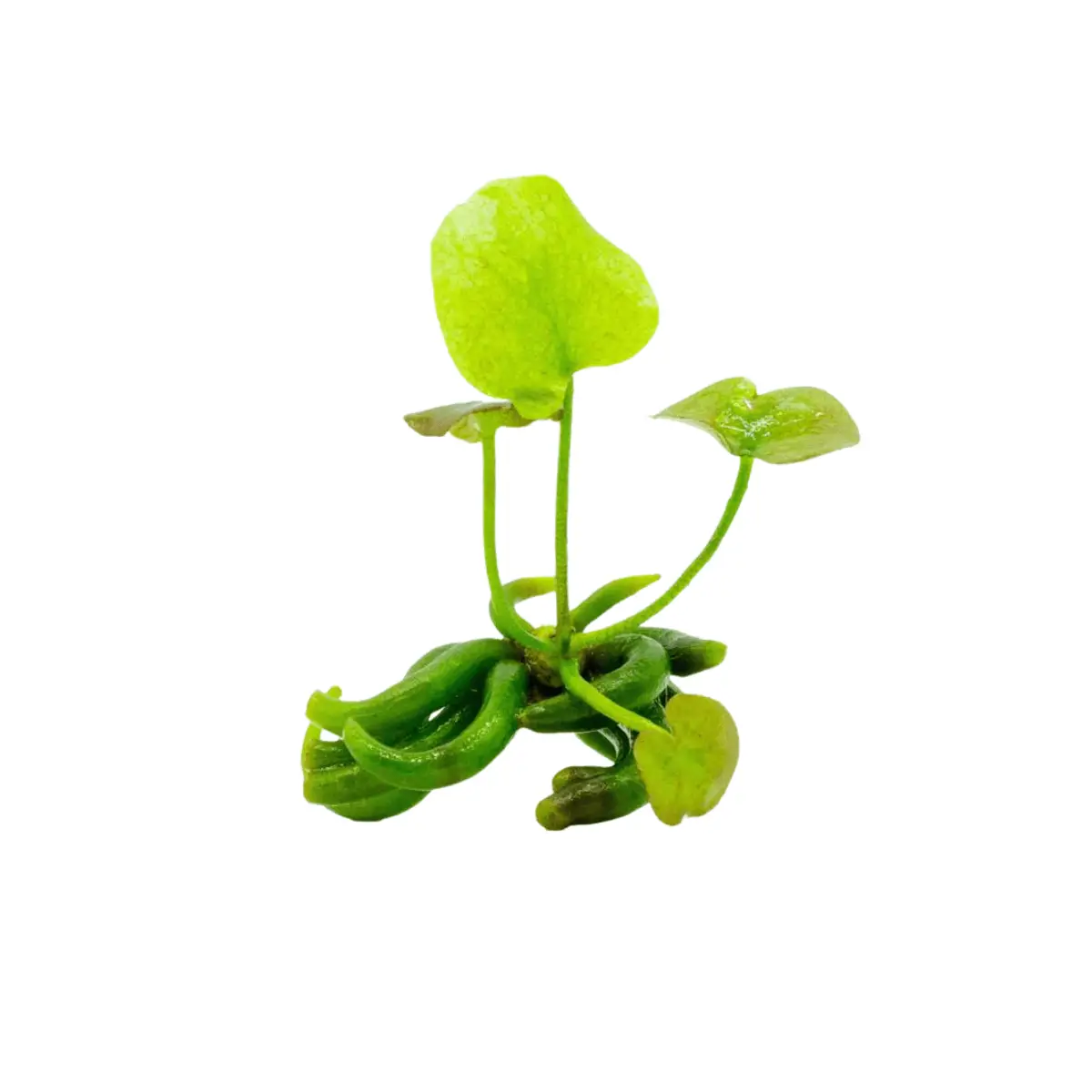 | Banana Plant |
| Price |
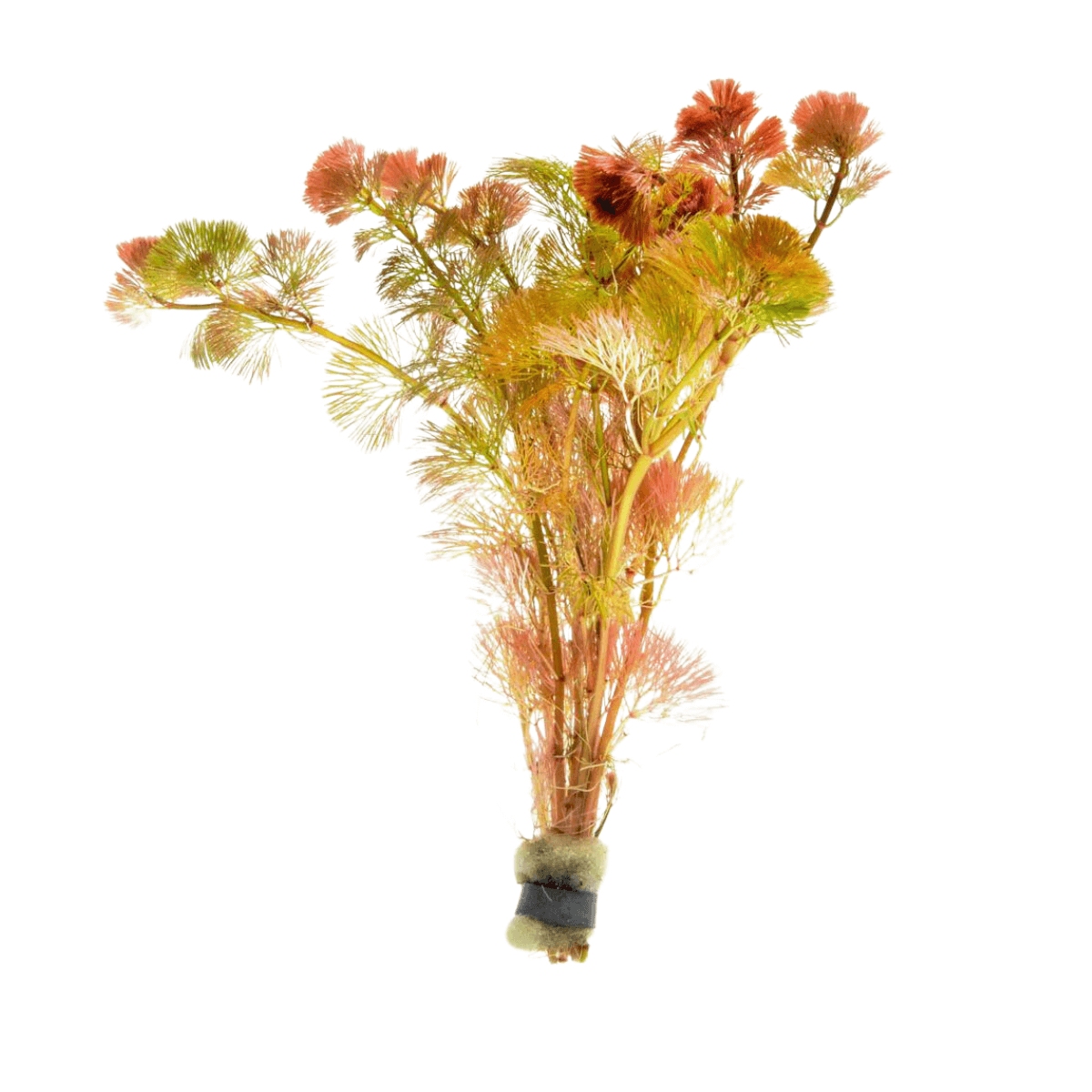 | Cabomba |
| Price |
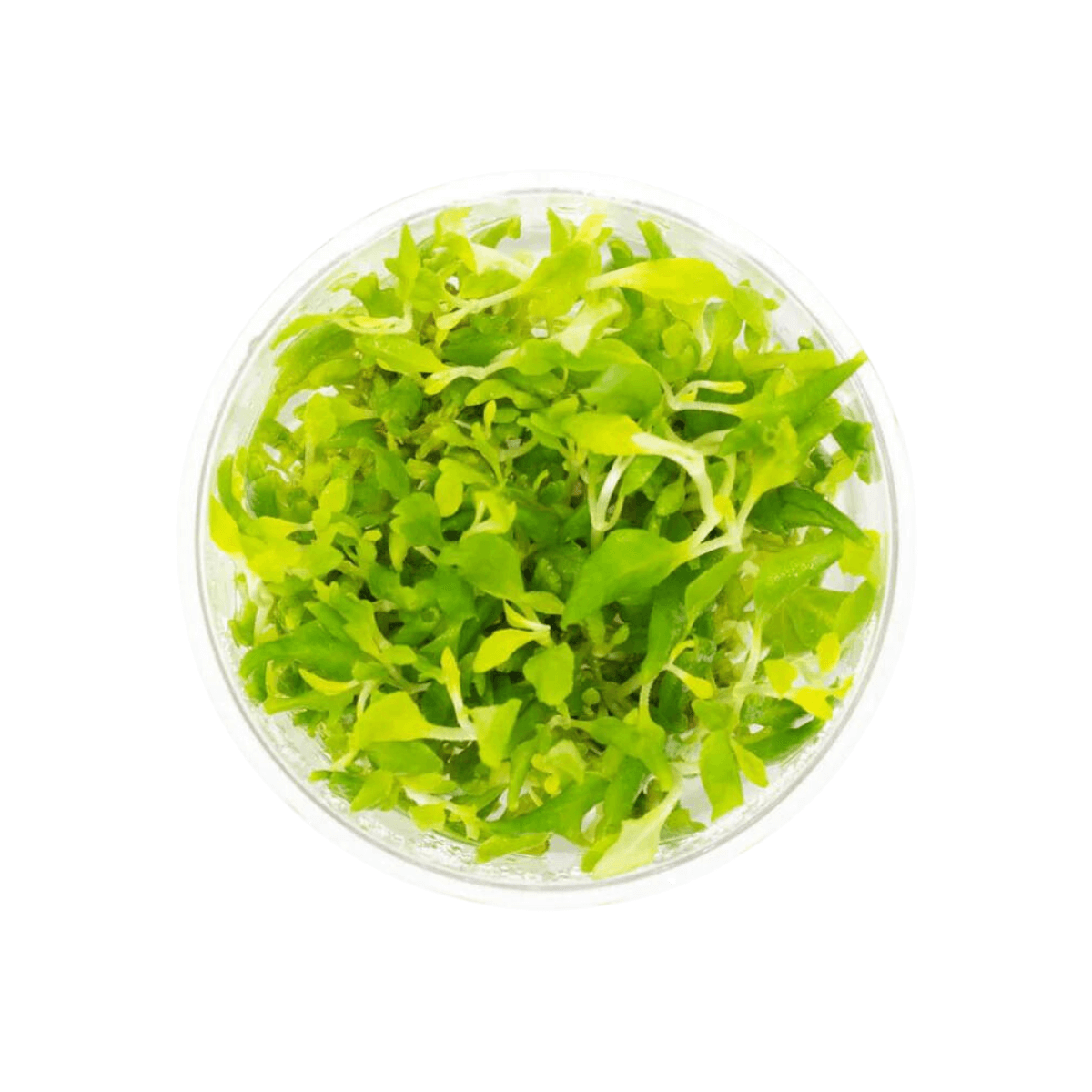 | Water Wisteria |
| Price |
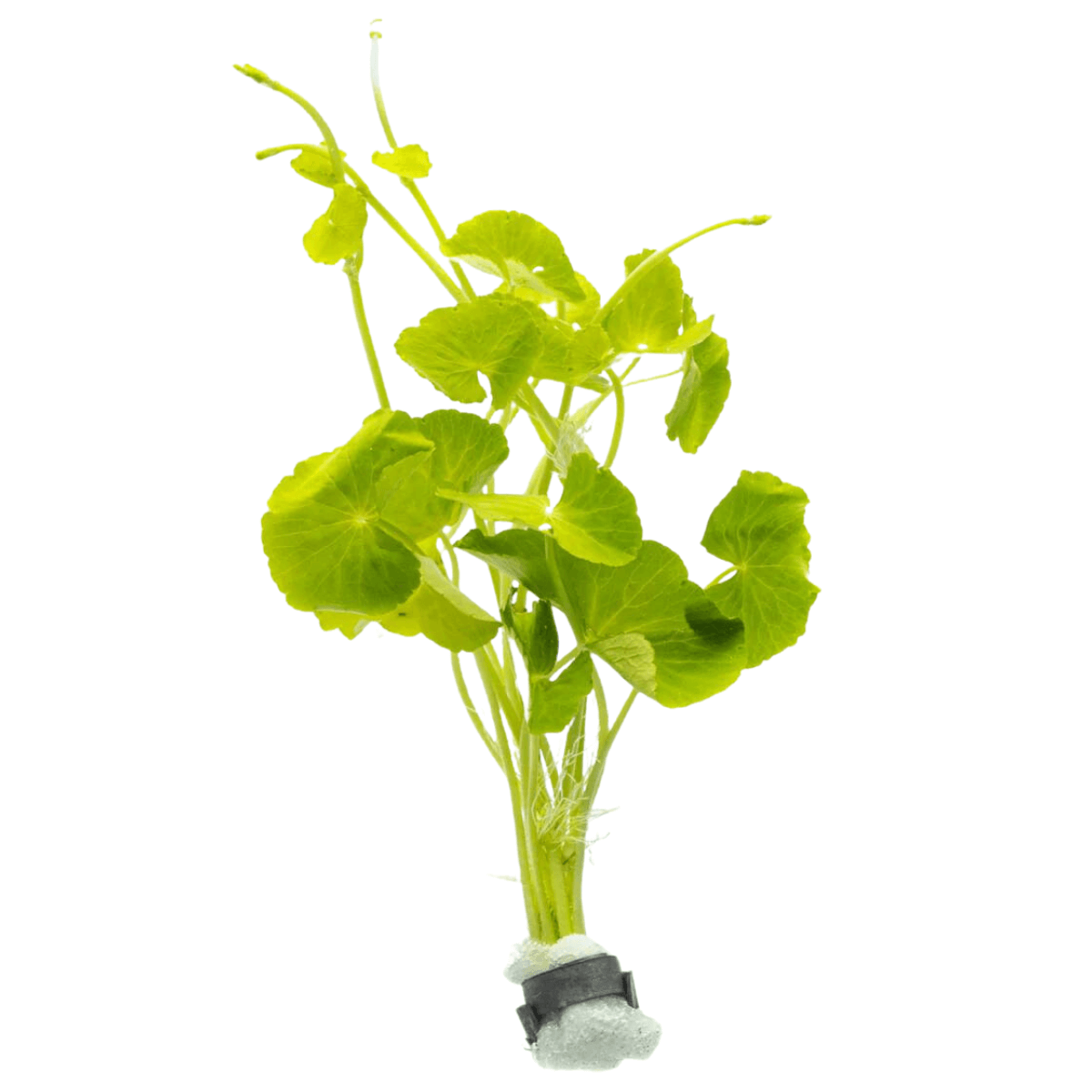 | Brazilian Pennywort |
| Price |
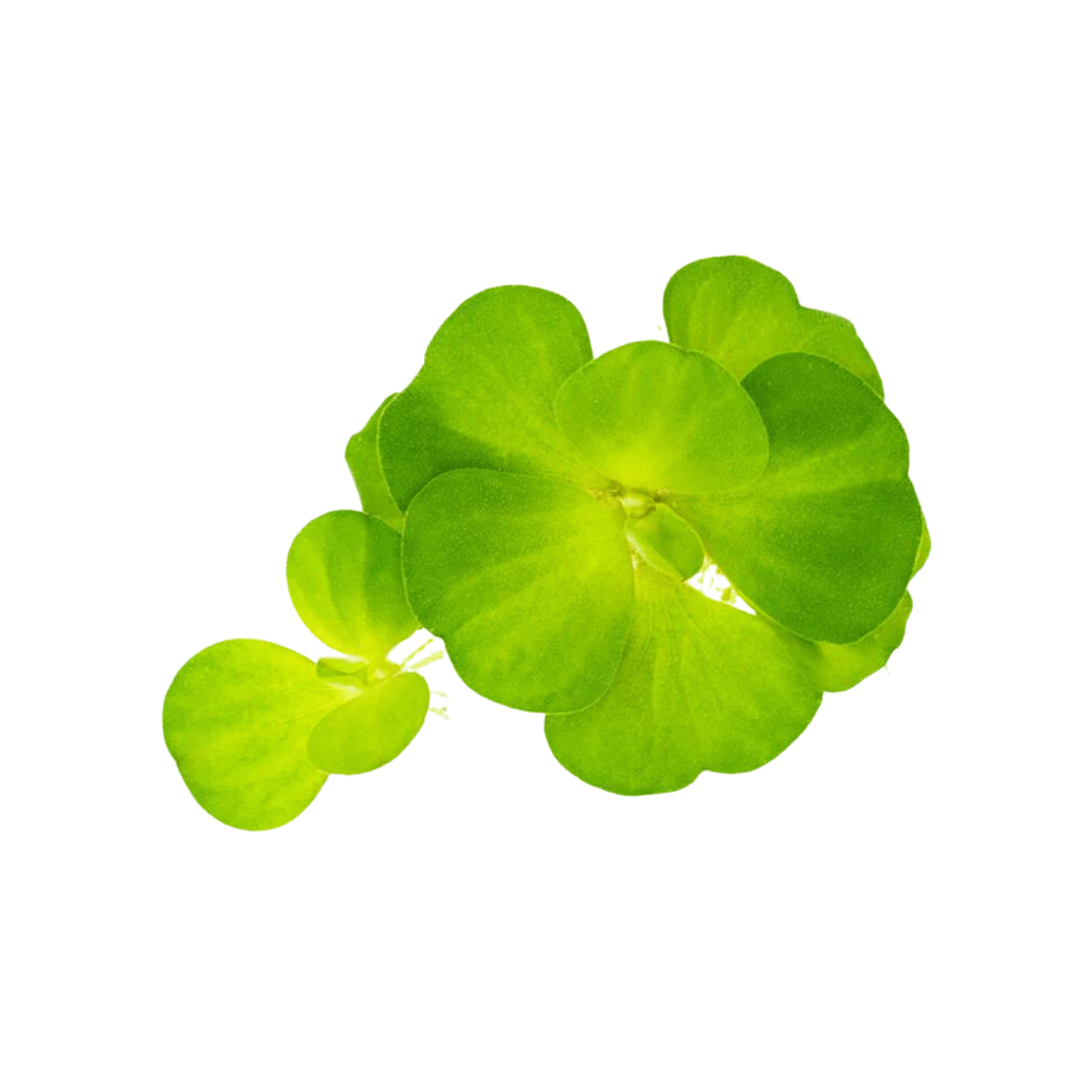 | Dwarf Water Lettuce |
| Price |
Red Root Floater
Red Root Floater

- Originates from South America
- Thrives in almost all freshwater aquariums
- Leaves are green under low light, transform to deep red under high light
- Distinctive red roots regardless of light conditions
- Rapid growth covers the water surface quickly
- Growth control is simple, requires occasional removal of a few plants
- Ideal choice for adding red hues to your aquarium.
Scientific Designation: Phyllanthus fluitans
Skill Level: Beginner
Light Exposure: Low to High
Aquarium Position: Surface
Growth Velocity: Rapid
CO2 Necessity: None
The Red Root Floater is an impressive floating flora hailing from South America that thrives in virtually any freshwater aquatic environment. Under low light conditions, the foliage of this plant exhibits a green hue, but it shifts to a rich red when exposed to intense lighting.
The eye-catching red roots of these floaters remain consistent regardless of the lighting arrangement.
Red Root Floaters multiply quickly and can swiftly carpet the water surface of your aquarium. Nonetheless, managing its proliferation is a simple task.
You merely need to remove a handful of plants intermittently. If you aim to incorporate some red tones into your aquarium, this is one of the finest floating aquatic plants to consider.
Java Moss
Java Moss

- Common misconception: Java moss must be rooted.
- Requires minimal care, making it ideal for beginners.
- Flourishes in various environments and compatible with diverse aquatic species.
- Offers strong aesthetic appeal regardless of its placement in the tank (floating or ground cover).
- This plant is rootless, made up solely of stems and small oval leaves.
- Can be pruned and groomed to achieve the desired look.
Yet another excellent choice among aquarium plants that float is the Java Moss. Many novice aquarium enthusiasts presume this plant must be rooted, but that’s a misconception (we’ll clarify more shortly).
Java moss is another ideal flora for those who prefer to invest more energy in plant care. This robust plant flourishes in nearly all conditions and cohabitates well with various aquatic companions.
The visual appeal of this plant also contributes to its popularity.
Regardless of how you integrate it into your tank (as a floater, as a ground cover, etc.), it produces an impressively captivating aesthetic.
This plant lacks roots, comprising solely of stems and petite elliptical leaves. It can be pruned and manicured to achieve your desired appearance.
To let this plant float, you’ll require an anchor for it, and a widely recommended option is a piece of cork. The cork floats and provides a convenient platform for the moss to latch onto.
This plant’s placement may require some consideration.
If your aquarium has substantial intakes near the surface, you must ensure your floating plants won’t be drawn in. This can potentially harm or even shatter the cork flotation device the Java moss is bound to (which you don’t want your fish pecking at).
Mosaic Plant
Mosaic Plant

- Leaves close at night and reopen at sunrise, showcasing a natural circadian rhythm.
- Requires advanced care level.
- Thrives best under high lighting, and grows in the midground.
- Has a slow to moderate growth pace, doesn’t require additional CO2.
- Requires ample space, making it not suitable for all aquariums.
- Ideal for ponds or large freshwater tanks for full growth.
Known scientifically as Ludwigia sedioides, the Mosaic plant is one of the most unique aquarium plants that float. Its striking foliage of dark green leaves rimmed with red folds up every night and then re-emerges with the sunrise, mirroring a natural circadian rhythm.
However, this plant is not for the faint-hearted, as its care level is advanced. It thrives best under high-lighting conditions and places itself at the midground of your setup.
With a growth pace ranging from slow to moderate, it doesn’t necessitate extra CO2 for growth.
While undeniably gorgeous, there are better fits for every aquarium than the Mosaic plant due to its spacious requirements.
Ideally, it should be established in ponds or more extensive freshwater tanks to attain its full size and exhibit its true magnificence. When it’s in a state of flourishing growth, it rewards the caretaker with a large display of beautiful yellow flowers.
Anacharis
Anacharis

- Ideal for novice aquarium enthusiasts due to its straightforward growth.
- Can grow either floating or rooted in the substrate.
- Shows a fairly rapid growth rate and can reach significant size.
- Best cultivated in medium to large aquariums to prevent overcrowding.
- Grows under low to moderate lighting, with no specific CO2 needs.
- Easy-care option with a moderate to fast growth rate.
Known by the scientific name Egeria densa, Anacharis is another straightforward stem plant ideal for novice aquarium enthusiasts. It has the versatility to grow either freely floating in the tank or securely rooted in the substrate. This plant thrives notably well in chilly waters and less warm tropical aquariums.
Demonstrating a relatively rapid growth rate, Anacharis is a robust plant that can reach considerable dimensions.
Cultivating this plant in moderately sized to large aquariums is advisable to prevent it from monopolizing a small tank. This plant is one of the superior floating aquatic plant choices for beginners.
It thrives under low to moderate lighting conditions and has no specific CO2 requirements, which makes it an easy-care option with a medium to fast growth rate.
Salvinia Natans
Salvinia Natans

- Salvinia natans thrives in cooler water aquariums.
- Easy to maintain with distinct, hair-like leaf features.
- Typically small in size, suitable for low water flow tanks.
- Thrives under various lighting conditions, fast growth rate.
- No additional CO2 requirement, best placed on water surface.
Salvinia natans, a fascinating choice for floating freshwater plants, especially thrive in aquariums with cooler water temperatures. This plant is simple to maintain and carries a distinct visual appeal due to its green, air-filled leaves adorned with attractive, hair-like features on the upper surface.
Typically, the leaves of this plant tend not to exceed slightly an inch in size, although they usually appear smaller in home aquariums. Salvinia natans does not possess an extensive root system, which makes it particularly suited for tanks with a lower water flow. From a care standpoint, it doesn’t demand much.
It thrives under a broad spectrum of lighting conditions, ranging from low to high. Moreover, its growth rate is impressively swift, yet it requires no additional CO2 supplementation. In essence, the plant finds its ideal placement on the water surface.
Salvinia Cucullata
Salvinia Cucullata

- Salvinia cucullata is a floating fern native to Asia’s tropical regions.
- Easy to maintain and versatile in different light conditions.
- Prefers floating on the water’s surface.
- Fast-growing but doesn’t require additional CO2.
- Leaves curl upwards under optimal conditions, creating an interesting visual appeal.
- Adequate light, abundant nutrients, and calm water needed for best growth.
Salvinia Cucullata, an intriguing floating fern native to Asia’s tropical areas, may not be well-recognized among hobbyists but certainly adds a distinctive touch to planted aquariums.
Easy to maintain, it flourishes under varied lighting conditions ranging from low to high, and, true to its aquatic nature, it prefers to stay afloat on the water’s surface.
With a fast growth rate, this plant expands quickly, yet it does not necessitate additional CO2, making it a relatively carefree addition to your aquarium.
Its foliage, measuring under half an inch, provides an attractive visual appeal as it tends to curl upwards, forming a beautiful bag-like shape under optimal conditions.
Nonetheless, achieving this unique formation in the home aquarium requires adequate lighting, abundant nutrients, and tranquil water conditions.
Hornwort
Hornwort

- Low-maintenance and visually appealing.
- Ideal for hassle-free planted aquariums.
- Enhances aquarium with deep green color.
- Unique, wispy leaves on thin stems.
- Generally compatible with aquatic species.
- Rapid growth needs monitoring to avoid overgrowth.
Hornwort ranks high among our personal favorites for several compelling reasons. This aquatic greenery is exceptionally straightforward to maintain and has a visually appealing appearance.
It’s often the first choice for many fishkeepers who seek a planted aquarium without the related hassles. We are particularly fond of the ambiance this plant lends to an aquarium.
It sports a rich, deep green hue that significantly alters the lighting landscape within your fish tank. The leaves sprout from the slender stems and exhibit a distinctive, wispy aspect.
It characteristics set it apart from your typical aquatic plant. Moreover, this floating plant is compatible with virtually any aquatic species. While it’s advisable to thoroughly research the compatibility with your existing fish species before acquiring the plant, Hornwort is generally considered a safe choice.
The only potential drawback to being mindful of Hornwort is its rapid growth pace.
Since you’ll be introducing it as an aquarium plants that float in your fish tank, monitoring its progress is essential. Neglecting it for extended periods could result in the plant overrunning the surface and potentially obstructing equipment, such as filters.
Banana Plant
Banana Plant

- Requires minimal care with a moderate growth rate.
- Adapts to midground or foreground in moderate to high light.
- Unique root growth, either rooted in substrate or floating.
- No additional CO2 supplementation needed.
- Can bloom under good light, enhancing tank aesthetics.
Originating from the Southeastern United States, the Banana Plant, scientifically named Nymphoides Aquatica, is a beautiful, water-lily-like aquatic plant that requires minimal upkeep.
With a moderate growth rate, it flourishes under medium to high lighting conditions and can adapt well to the midground or foreground of your tank.
One of its unique characteristics is its root growth pattern. It can either root itself into the substrate and extend upward to the water’s surface or freely float and send roots downward.
Interestingly, it does not demand additional CO2 supplementation, making its maintenance less complicated.
If you wish to witness a fascinating transformation, give it good light and let it grow. This plant can bloom, adding a new aesthetic layer to your tank when it matures under favorable conditions.
Cabomba
Cabomba

- Unique aesthetic, unmatched by other species.
- Despite being a weed, it has a lush and interesting appearance.
- Easy to care for, simply introduce to aquarium and let it float.
- Survives in various water conditions, requires moderate light for growth.
- Ideal for small fish that require hiding spaces in vegetation.
Cabomba, an under-discussed plant among those seeking ideal floating alternatives, is worth noting in our list. We especially appreciate this species due to its distinctive aesthetics, unmatched by any other.
Though it’s considered a weed, Cabomba showcases a lush and intriguing appearance that is truly pleasing to the eye. Moreover, the ease of maintenance adds to its appeal.
All you have to do is casually introduce it into your aquarium and allow it to float! The plant proves hardy in a broad spectrum of aquatic conditions and requires a moderate degree of light for growth.
Cabomba is a commendable floating option for aquariums housing petite fish species that necessitate hiding spaces. If your aquatic creatures are accustomed to seeking shelter within the vegetation in their native environment, they’re bound to adore Cabomba.
Water Wisteria
Water Wisteria

- The plant’s colors pop vibrantly under appropriate lighting.
- Features slender, elongated leaves and sturdy stems, providing hideouts for aquatic life.
- Notable for its fast growth, requires attention to prevent tank takeover.
- Important to consider light needs of other tank inhabitants, may need to monitor wisteria growth closely if other organisms struggle in low light.
Water Wisteria is a plant that we hold in high esteem, and it can either be left to float or anchored into the substrate, presenting an appealing look in both instances.
There’s no doubt about the visual allure of this plant when exposed to appropriate lighting, the plant’s hues radiate vibrantly. It possesses slender and elongated leaves supported by a sturdy stem. These stems serve as great hideouts for aquatic creatures, provided the aquarium is manageable.
One characteristic of this plant is its speedy growth, which requires your attention as a caretaker, and ignoring it for extended periods might result in it overrunning the tank.
Therefore, knowing the light requirements of the other organisms inhabiting your aquarium is crucial, and if they thrive poorly in low-light conditions, you’ll need to supervise the proliferation of your water wisteria with additional vigilance.
Brazilian Pennywort
Brazilian Pennywort

- Brazilian Pennywort is an attractive floating plant, can drastically change aquarium aesthetics.
- Features large, round leaves, spaced to create a pleasing water surface pattern, also allows some light through.
- Growth pace is heavily reliant on light exposure.
- With proper care, can bloom, providing a stunning view from above.
- Can hinder air-breathing fish, like Dwarf Gourami, if left unchecked due to dense growth.
This is a uniquely attractive floating flora that can entirely alter the aesthetics of your aquarium. It possesses large, round leaves that are moderately distanced from each other, giving rise to a delightful pattern on the water’s surface while still allowing some light penetration (unless it grows unrestrained).
This is one of those botanical species where the growth pace is greatly influenced by the light exposure it gets. While this is true for all flora, it applies to Brazilian Pennywort.
Given the appropriate care, you could also coax this plant into blooming. The resulting display can be breathtakingly beautiful when viewed from above!
Fish species that breathe air, like the Dwarf Gourami, may struggle with this floating plant unless its growth is kept in check. An excessive amount of Brazilian Pennywort can present a daunting barrier for fish that need to access the surface for oxygen.
Dwarf Water Lettuce
Dwarf Water Lettuce

- Its foliage extends to about 1.5 inches in length, has a soft, velvety texture.
- Features a dense root system, provides ideal hiding spots for small fish and shrimp.
- Effective in reducing nitrate levels in aquariums.
- Low maintenance, thrives under varied light intensities and naturally floats on the water surface.
- Exhibits rapid growth without needing additional CO2 supplementation.
Hailing from Lake Victoria in East Africa, Pistia stratiotes, commonly known as Dwarf Water Lettuce, is a green floating plant. The foliage of this aquatic species extends to approximately 1.5 inches in length and is characterized by a soft, velvety texture.
One of the fascinating attributes of Dwarf Water Lettuce is its dense root system that descends into the aquarium, offering ideal hiding spots for shrimp and diminutive fish. Moreover, these extensive roots contribute to their exceptional ability to decrease nitrate concentrations in fish tanks.
In terms of its care, this Water Lettuce is relatively undemanding, and it flourishes under a broad range of light intensities, from low to high, and naturally occupies the water’s surface. With a rapid growth rate, it can fill up your tank in no time, and interestingly, it doesn’t necessitate additional CO2 for its profitable growth.
Conclusion
These aquarium plants that float truly represent the best of the crop. With a vast array of distinctive and intriguing appearances, they truly offer something for every enthusiast.
Given their visual allure and inherent benefits of live plants, we suggest you consider integrating them into your setup. Once you witness their transformative effect on your aquarium aesthetics and the notable improvement in water clarity, you’ll be convinced.
If you’ve got a plant that didn’t feature on our list, do share it with us! We aim for our suggestions to be as beneficial as possible and would be delighted to expand our recommendations in the future.


